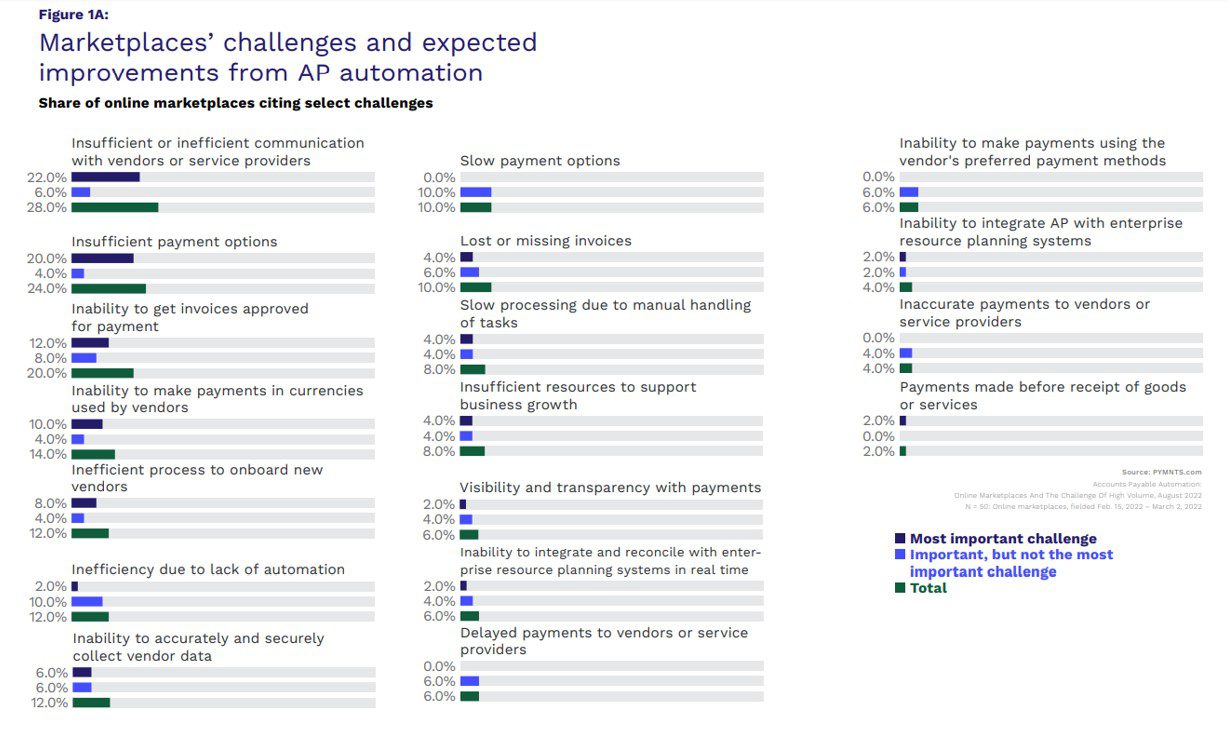70% of Marketplaces Expect AP Innovation to Improve Relationships With Vendors

There’s no reason for merchants to want to communicate poorly with their vendors, yet aging payables systems can force these key interactions to be a headache.
PYMNTS’ research finds that poor communication with vendors or service providers is the most-cited challenge by online marketplaces seeking to modernize their accounts payable (AP) systems. It is also the challenge that marketplaces were most likely to deem most important; after all, a marketplace’s vendors embody the brand for many consumers.

Other vendor frustrations include the failure to keep clients apprised of the progress of product shipments, customer complaints and payment statuses. These pain points may be especially frustrating for online merchants, whose explosive growth since the pandemic began has led 98% of sector executives to say their AP volumes are set to increase over the next three years. That rate of growth could be threatened, as 82% of online marketplaces said their business’s expansion would be at least somewhat or slightly inhibited if they could not handle their forecasted growth in AP volume.
According to 54%, automation is key to handle this explosive volume growth, which has served as an underlying cause of poor vendor communication as online marketplaces with legacy or non-modernized AP systems struggle to handle their exponential growth. The potential benefits of modernizing through automation are clear: 70% of marketplaces expect their vendor relationships to improve as they innovate their AP platforms, especially when it comes to payment processing speed, which can directly limit growth expectations.
Efficient communication is vital for marketplaces to scale their operations at a healthy rate and maintain productive relationships with those who power them. As a result, marketplaces must provide clients and suppliers with important information such as transaction details, returns, promotions, stock supplies, fulfillment details and product performance. Given these factors, finding a responsive AP automation partner is critical to the seamless processing and fulfillment of consumer purchases.
Fortunately, online marketplaces have choice when deciding on an AP automation partner. Last week, for instance, provider of purchase-to-pay cloud software for AP professionals Nimbello announced the launch of an AP automation solution for businesses, with the goal of helping businesses scale their operations, strengthen their vendor supply chain, increase efficiency and gain spending insights.
The day before, New York-based FinTech Metaprise Banking introduced a B2B payments tool aimed at entrepreneurs and small businesses. This will enable freelancers, retailers and others the ability to receive payments via multiple options and generate online invoices using in-platform links to request and receive payments.
Not all of these developments have occurred in 2023. Late last year, cloud software provider SutiSoft introduced an upgraded version of its AP solution software, SutiAP. The program’s new features include the option to print multiple invoices at once, select multiple cost codes and generate spend reports based on search criteria. The program also offers tools designed to automate manual workflows.
Clear communication between stakeholders in any business is vital, but this is especially true when it comes to the partnerships involving vendors and marketplaces. A modernized, automated AP system is vital to maintaining these crucial relationships and retaining the ability to scale. Finding the right automation solution thus can help marketplaces maintain productive, professional relationships with clients and suppliers — and, in turn, with customers.
